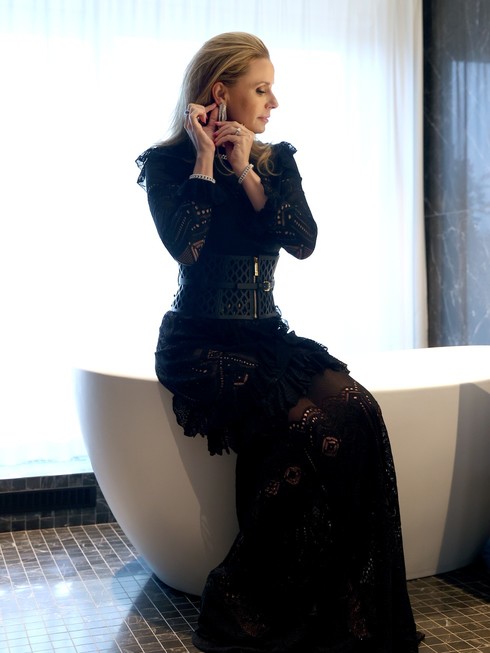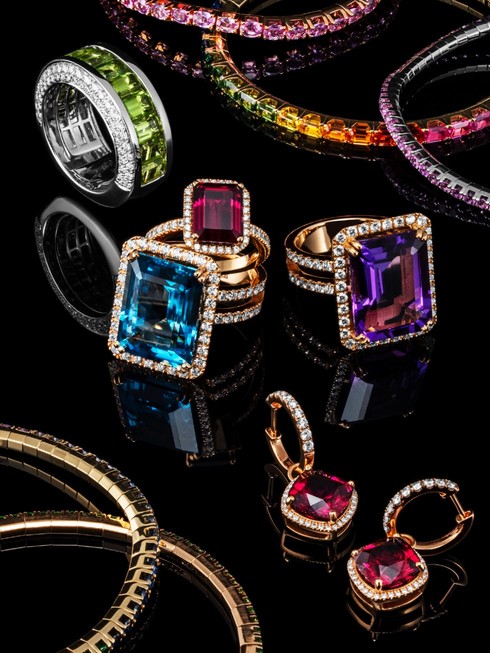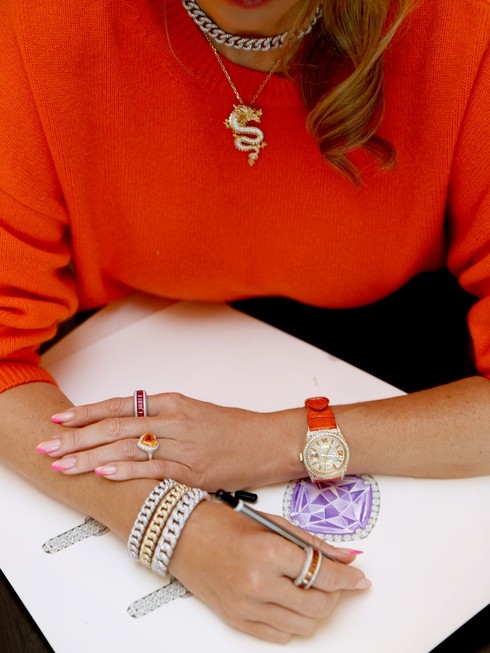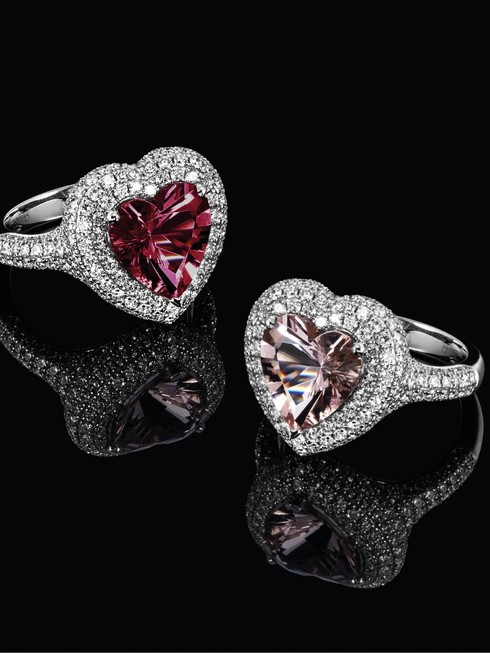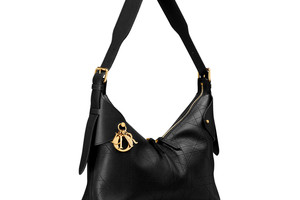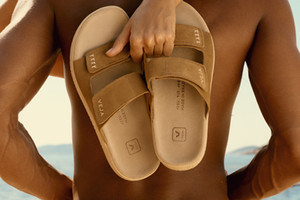RARE JEWELRY INTERVIEW - FOUNDER DANNIE LARSSON
Written by Jahwanna BerglundDannie Larsson, the founder of the renowned jewelry empire Rare Jewelry’s
Journey into the world of jewelry began with an unwavering passion for craftsmanship and an inherent eye for beauty.
Dannie's relentless pursuit of perfection led her to the start of her own company Rare Jewelry. After her math studies in Paris and working at a bank she calculated her own fortune in the world of gems.
Driven by a desire to create something truly exceptional, she seeks inspiration from all corners of the globe in search of the rarest and most exquisite gemstones.
Her creations stand out not only for their breathtaking beauty but also for their storytelling and the meticulous craftsmanship that is put into every piece.
Dannie Larssons Jewelry has quickly became synonymous with elegance, rarity, and timeless sophistication.
Dannie's commitment to ethically sourcing materials and supporting local artisans has endeared her to both her clientele and the industry. Her jewelry isn’t only about luxury; it is a testament to her respect for nature, culture, and the skilled hands that brought her visions to life.
Can you tell us about the craftsmanship that goes into creating each Rare Jewelry piece?
Craftsmanship is a bit long to explain since I tend to create rare and complicated pieces. But all the pieces go through some similar steps.
1.Hand drawing by me
2. Cad drawing/ 3D drawing
3. Search for gemstones-cutting gemstone
4. Gold casting
5. Diamond setting /Gemstone setting
6. Polish
7. Control
How do you ensure that the details and quality of each piece meet the highest standards?
When the piece is ready we have a controller at each manufacturing step. One for setting and one for polish and one for overall ( can be the closure/lock, changeable size or titanium check). Also if there is a novelty it Will be tested for a period of 3 Months to make sure it Will last. As we sometimes produce different steps in different countries, we have to check on both places. Later when the product arrives at the shop the brand manager checks the pieces once again so the pieces do not get damaged in the shipping. We also have a gemstone expert in Sweden who checks the quality of gemstones and the quality of the cutting/polish. It has to be Perfect.
Could you share some insights into how you source rare gemstones and materials for your collections?
We have an expert in Sweden who travels around the world to find the perfect raw materials for gemstones in Rare Pieces. Most of our gemstones are cut and polished in Sweden. If we find a high quality stone we can also create a Rare cut out of it. We also look at vintage stones.
What criterias do you use to determine the rarity and uniqueness of the materials used in your jewelry?
For the diamond we follow specific requirements and standards. We check for color, clarity and cut. We use for pave setting G-H color very small-small inclusion and for larger diamonds F-G color Very small inclusions -very very small inclusion. Always an excellent cut.
Lately we started to use titanium in the jewelry. Why? Because it will last forever. Very good material to work with. We use it Inside the pieces and gold, as before, around the diamonds.
Can you give us examples of some of the most remarkable and uncommon gemstones featured in your jewelry pieces?
We found an amazing raw stone with perfect clarity from Madagascar that we cut into petroleum blue Rare Heart for the ”heart of the ocean”.
We also found an amazing Sapphire from Sri Lanka. For this specific ring we bought a vintage stone with very good quality no inclusions and re-cut it as a specific Rare-cut.
In the mines of Tanzania we found an amazing untreated Emerald . ( 99% of all emeralds are oil treated. ) Best stones found in 4 years. Cut and polished in Sweden.
Extra info about Rare-cut.
In 1919, Dr. Marcel Tolkowsky designed the modern round brilliant cut. His work was based on years of studying diffraction of light through the facets of a diamond. Rare Jewelry has created a novel cut for gemstones that – inspired by the work of Tolkowsky – aims to elevate the brilliance of colored gemstones to levels previously associated only with diamonds. We call it the Rare-cut. Rare Jewelry’s unique gemstones’ cut to make the gemstones sparkle more than normal. The Rare-cut draws upon the highest standards of Swedish craftsmanship. We have so far created 8 different Rare-cuts.
Sustainability is a growing concern. How do you ensure ethical sourcing practices are maintained while acquiring rare materials for your jewelry?
When it comes to gemstones, the biggest hurdle is traceability. At gemstone cutting factories, rough gemstones from different origins are often mixed. This makes it a challenge for buyers down the line to know the background of their gems. The mining & cutting of a gem may be done fully sustainably, but unless its story has been preserved you would never know.
Most jewelry manufacturers and designers approach this challenge by sourcing from cutting factories or other wholesalers that are highly experienced and demonstrate excellent business practices. That way, while the origins are usually still mixed and the background of each gem may not be known, the cutting factory is expected to handle their sourcing in a responsible way.
Every chance we get, Rare Jewelry goes one step further. We work tightly with several gem cutting artisans and a gemstone sourcing specialist in Sweden. Our gem expert travels regularly to gem-producing areas including south Asia, west Africa and east Africa to buy rough gemstones as close to the source as possible. This is why we know the country of origin of almost all colored gemstone center stones in our Rare pieces.
Sri Lanka has gone further than most countries in making small-scale mining environmentally friendly. Through clever regulations, the government has managed to make almost all Sri Lankan mine pits now filled in and the land restored. As a bonus, malaria has been eradicated (malaria mosquitoes used to live in the flooded sapphire mines).
One of the largest ( now empty ) sapphire mines in Sri Lanka Will be completely restored in one Year to a rice Field.
All diamonds from Rare Jewelry are sourced according to the Kimberley process.
GIA is a member of the Kimberley Process, which is an international certification system for rough diamonds. This means that all GIA diamonds are guaranteed to be conflict-free. We buy all Lägerchef stone through GIA.
Do you collaborate with artisans or experts in other fields to create your pieces? If so, how does this collaboration enhance the final product?
Yes I do. I always discuss with experts in different fields about smart solutions to the locks and flex and setting in the jewelry. Often when I come with a new idea they say it will not work. Then we together come up with solutions. I like to think outside the box in craftsmanship.
Are there opportunities for customers to request customization or bespoke rare jewelry pieces? How do you approach these requests while maintaining the essence of rarity?
Yes indeed, bespoked Jewelry is my speciality. I custom make both from scratch and from old pieces. The bespoke process is the most inspiring for me as a designer. I get to draw something completely New. I Can draw for days. But as I am the only designer of the brand, the custom made pieces will always look a bit ”Rare”. I try to read the client at the same time as I draw the bespoked pieces in my own way. Sometimes, however, I have to say no to clients with special designs I don’t believe in.
Rare jewelry is often considered an investment. Could you elaborate on how investing in rare jewelry can hold value over time?
Because of the quality of production and quality of material rare pieces will last for a long time and keep their value.
A piece of jewelry that is made with great skills and attention to details will be more valuable than a piece that is mass-produced. (Unless you rely on brand awareness).
Makeup and Hair: Shada Gharib / Zap Talents

